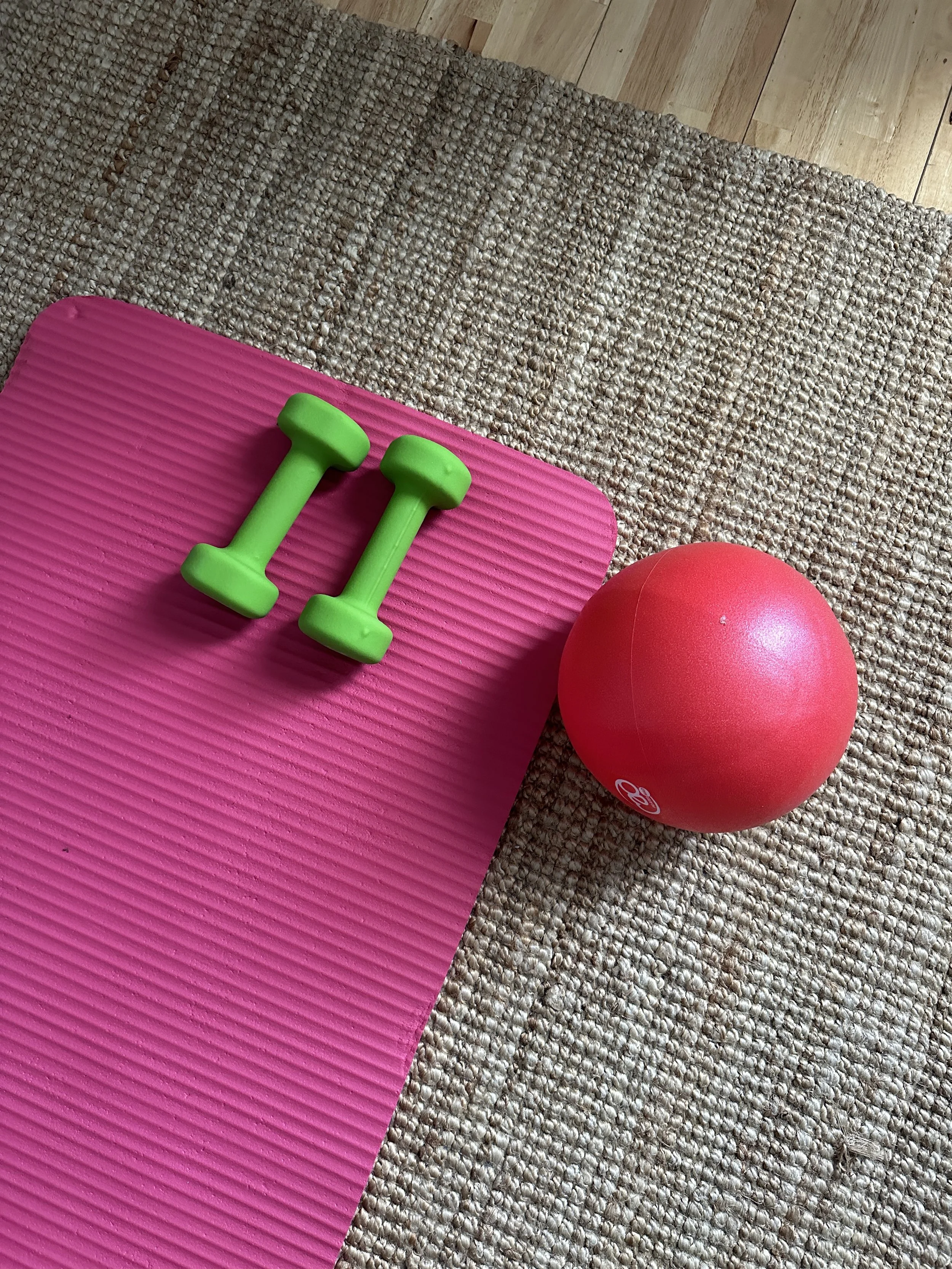Let’s talk about how to make this year a transformative one for your body and mind, with a special focus on strength, mobility, and balance—especially during those pivotal years during perimenopause and menopause.
Understanding Perimenopause: Navigating the Transition with Confidence
Navigating perimenopause doesn’t have to feel overwhelming. In this blog post, we explore what perimenopause is, common symptoms, and practical strategies to manage this transition with confidence. From staying active and eating well to exploring stress management techniques and hormone replacement therapy options, we provide actionable tips to help you thrive during this phase of life. At Klein Physical Therapy, we’re here to support you every step of the way with compassionate, whole-body care.
Understanding Menopause: What Changes to Expect and How Pelvic Floor Therapy Can Help
Menopause marks a significant transition in a woman’s life, often accompanied by physical and hormonal changes like vaginal dryness, urinary urgency, and bone density loss. These shifts can impact comfort, mobility, and quality of life. However, solutions like pelvic floor therapy offer powerful support, addressing symptoms such as pain during intercourse, urinary incontinence, and weakened pelvic muscles.
In this article, we discuss what to expect during menopause, how to manage symptoms proactively, and the transformative role pelvic floor therapy can play. Discover practical tips for maintaining strength, vitality, and confidence throughout this natural phase of life. If you’re ready to take control of your health, learn how our specialized team can help you thrive during menopause and beyond.
21 Surprising Facts About Your Pelvic Floor
Your pelvic floor is a (somewhat) rarely discussed part of the human body.
It helps us urinate, has a role in intercourse, helps with bowel movements, and stretches quite a bit during pregnancy and giving birth. The latter of which is why many of our clients reach out.
How can we coordinate the pelvic floor to reduce pain during sex, stop leakage, and “get back to normal”? Physical therapy helps! And, we recommend seeing a PT before getting pregnant (if possible), during, and definitely after pregnancy to properly strengthen this vital set of muscles.
Did you know?
The pelvic floor is made up of layers of muscles and other tissues
It’s shaped like a hammock, from your tailbone to your pubic bone
Exercises can help reduce the need for surgery for pelvic floor dysfunction
Passing wind from the vagina when bending over can be a sign of PFD
Pelvic floor issues can affect both men and women
If you’re experiencing chronic jaw soreness, your pelvic floor could be why
Pelvic floor work is part of strengthening your core
Doing Kegels on your own is not recommended (ask a professional - these could actually harm you!)
Pain when inserting a tampon or having sex is not considered “normal” and could be a pelvic floor issue
Overexercising your pelvic floor can also lead to problems
The pelvic floor is controlled by the brain and nervous system
Pelvic floor dysfunction can cause lower back pain
The stronger your pelvic floor… the stronger your orgasms (yes, truth!)
Lower estrogen levels can result in weakened pelvic floors
You can experience pelvic floor issues even if you had a C-section
Caffeine and alcohol can negatively affect your pelvic floor as they are diuretics and cause your kidneys to create more urine (if you can, try to switch to decaf as much as possible!)
Pelvic muscle spasms can be attributed to pelvic floor dysfunction
A frequent need to urinate could be a sign of pelvic floor dysfunction
Almost one-quarter of women face pelvic floor disorders
Women and men who are overweight or obese may have more pelvic floor issues
You can fix many, many problems associated with your pelvic floor through targeted, specific exercises and PT!
Both Lea and Katie of Klein Physical Therapy in Denver, Colorado can treat pelvic floor issues. It doesn’t have to be something you “just live with.” Life can be more enjoyable with a healthy pelvic floor. Join us in-person and virtually with pelvic floor workshops and education, as well as one-on-one sessions with either of our specialized physical therapists.
Living With Pain and Injuries
(And Why You Shouldn't Put Off Trying Physical Therapy)
“And when I go like this, it hurts,” says the patient. So the doctor says, “Don’t do that.” Yet, the physical therapist says, “how about trying this, so that you can still do that.”
When Doing the Things You Love, Hurts
No matter the activity, running, yoga, “momming”, cycling, climbing… when you injure yourself and have to stop, it has devastating results. Not just physically, but emotionally too. And, it can spiral to where you stop trying to be active, because the pain keeps coming back.
Our bodies are interconnected in amazing ways. Take acupressure for example. Have a pounding headache? Squeezing the area between your thumb and pointer finger can reduce the pain. Similarly, with physical therapy, we use modalities to strengthen parts of the body that support other “weaker” parts. In short, physical therapy can reduce pain by helping you get stronger, diversifying the muscles you’re using, and reducing strain.
Living With Pain Might Not Have to Be Your Only Option
“I’m fine,” you tell yourself. But are you really? Maybe for most of the day until you bend in that one particular way or come down hard on that knee during a run. Ouch. There it is again. What if you didn’t have to feel so much pain? What if it could be reduced so that you really could enjoy the activities you love? Cue physical therapy.
“Have you tried __________________ ?”
If you’re someone who has been living with an injury, pain or chronic pain, you’re probably straight up sick and tired of (well-meaning) people asking you if you tried this or that. Yes, yes, I’ve tried that med, that herb, that stretch, that modality… you might say.
But simply because you’ve tried a lot, doesn’t mean you’ve tried it all. It could simply be that you haven’t been matched with the right person, or that the timing of that particular remedy was off. Please, don’t give up. You do not have to live with gripping pain each and every day of your life.
Worried that Physical Therapy Might Not Work?
It’s an investment, simply put. Yet, it could be the one thing that (finally!) pays off. We offer a complimentary 30-minute Discovery Session so that you can try out physical therapy without risk or detriment. You are worth it.
Come on “in” - virtual sessions available! Or, come on in to our Denver office to meet us (safely) in person.
Dry Needling and Physical Therapy
What is Dry Needling and How Does it Work?
While the name of the treatment may sound intimidating or scary, dry needling is safe, minimally discomforting and often an effective technique for patients with certain musculoskeletal presentations. Dry needling is a treatment performed by skilled, trained physical therapists, certified in the procedure. A thin monofilament needle penetrates the skin and treats underlying muscular trigger points for the management of neuromusculoskeletal pain and movement impairments.
What’s a trigger point, you ask? It’s a tight band in a muscle fiber that can cause disruption in function, change or restrict range of motion, or can cause pain and tenderness. When the trigger point is treated with dry needling, it can increase blood flow and decrease tightness and pain.
We Typically Use Electronically Stimulated Dry Needling
Although dry needling sounds very similar to acupuncture, and they use similar equipment, they are entirely different procedures. Dry needling is performed by different practitioners with different training. Acupuncture is based on Eastern medicine, while dry needling is rooted in Western medicine and evaluation of pain patterns, posture, movement impairments, function and orthopedic tests.
In fact, at Klein Physical Therapy, we typically use electronic stimulation when we dry needle. The electronic “stim” helps with more effective release and also improved facilitation of the muscle as well (how it contracts).
Who can Benefit from Dry Needling and is it Painful?
Dry needling is typically used as one treatment in an overall plan that may also include physical therapy, heat therapy and education. Those patients experiencing any of the following symptoms, may benefit from dry needling: joint or disk problems, tendonitis, migraines, jaw and mouth problems, whiplash, pelvic pain, phantom pain, or spinal problems. Patients who are pregnant or who are very afraid of needles should avoid this treatment in the first trimester and consult with a medical professional before moving forward.
Dry needling may benefit me, but will it hurt? Dry needling can be painful depending on the severity of the injury and the location of the sore or tight muscle(s). The muscle may experience a slight contraction once the needle is inserted through the skin which may cause some pain or twitching. Interestingly enough, this reaction can be a good sign because it means the trigger point has been hit.
After the treatment, patients may experience soreness in the area for up to 48 hours, but this should not be cause for concern. Each patient should always keep open communication with their provider should they be experience pain that lasts for more than 48 hours or if they feel the pain is too intense.
Possible Side Effects from Dry Needling
Although there are typically always minor side effects with dry needling, such as bruising, minimal bleeding or temporary soreness, major side effects are extremely rare. The biggest risk factor to always double check with your provider is if they’re using sterile needles and that they dispose of these needles after each treatment. Also, be very sure that your practitioner is qualified, educated and trained in this method. Pneumothorax (when needling in the lung field) is a rare possibility. That’s why it's so important to go to a provider who is proficient at it. (Hint: we are highly experienced in Dry Needling)
Conclusion on Dry Needling
Overall, dry needling can be effective if used within a comprehensive health plan. It’s always a good idea to look at the root of the problem and try to prevent injuries first. Be sure to seek out a medical professional you can trust and who has a legit background in dry needling. Lastly, dry needling isn’t always covered by health insurance agencies. Be sure to call your health insurance provider to inquire about costs first.
Interested in Dry Needling? Come in for a Discovery Session at Klein Physical Therapy, P.C.
References:
Mayo Clinic Health System https://mayoclinichealthsystem.org/hometown-health/speaking-of-health/on-pins-and-needles-just-what-is-dry-needling
American Physical Therapy Association https://www.apta.org/PTinmotion/2015/5/dryneedling/
Healthline https://www.healthline.com/health/dry-needling-vs-acupuncture
Fast Track Physical Therapy https://www.fast-tracktherapy.com/services/dry-needling/
Runners Connect https://runnersconnect.net/dry-needling-effective-safe/
Cleveland Clinic https://my.clevelandclinic.org/health/treatments/16542-dry-needling
PT for LBP (Lower Back Pain)
Ouch!!! Not again….
If you’re a lower back pain sufferer… you know when you’ve pulled “that” muscle again. And, you know that you’re in for 2 or more weeks of acute pain. This can limit your activity and impair your work performance. It can stop you from playing with your kids, exercising, or enjoying nearly every activity.
Physical Therapy for Lower Back Pain
If you’re an “LBP” sufferer (what we call it at Klein Physical Therapy in Denver), you know that there isn’t much that helps…. except physical therapy. The muscles in your lower back (the erector spinae muscles), help support your spine and connect to your gluteal muscles. They have a lot of work to do! When your core is weak, your back muscles can try to support everything on their own… which can lead to inflammation when they are agitated. (aka, pain!)
Physical therapy for back pain in Denver is a very highly searched phrase. That’s because this kind of lower back pain is so common for so many of us humans. I mean technically… we aren’t “supposed” to even be walking upright. When our ancestors started this trend, it helped us a lot, but also created some issues… such as babies having to develop outside the womb in the fourth trimester, and, you guessed it, lower back pain.
Can You Heal Chronic Lower Back Pain with Physical Therapy?
So, we know it helps, but can physical therapy actually heal lower back pain? Yes, you actually can. And if you can’t heal it all the way, physical therapy can severely reduce the pain you experience. If you’ve tried other healing modalities (massage for one), you might have discovered that the muscles in your lower back are extremely hard to get to. It takes muscle training and strengthening to get the right tension in the supporting muscles so that one is not doing the job of two, three, four or more others (which can result in a strain or sprain).
Welcome to Klein Physical Therapy
We are a team a physical therapists that are dedicated to making sure you can move! (Properly and in a way that doesn’t create pain!). We can help you strengthen your core and live a life that doesn’t have to be so painful. Lower back pain is difficult to live with. If it’s affecting areas of your life (sleep, work, family), we can’t encourage you enough to try physical therapy. If you’ve done everything except tried PT and you’re curious if it could help, try a complimentary discovery session by clicking here.
Try a Discovery Session
On a limited, first-come, first-served basis, we are offering 30 minutes of our time to help you determine whether Physical Therapy might be right for you. Never tried PT? Wondering if it will work for your specific issue? Try a 30-Minute complimentary Discovery Session with one of our Physical Therapists and get back to doing the things you love.










